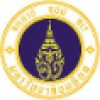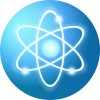
Combination of Motor Imagery Exercises and Brain Stimulation TMS Type PAS in Patients After Hemiplegic...
StrokeStrokes represent, in industrialized countries the leading cause of acquired motor disability in adults older than 40. Stroke is responsible for France from 150 000 to 200 000 new cases of hemiplegia each year. These patients will see their deficit to improve during the first 6 months after stroke. This recovery is largely based on brain plasticity mechanisms and the rehabilitation has as main objective to optimize these mechanisms. However, only 20% of patients hospitalized in a rehabilitation sector recover a functional upper limb. This lack of functionality is not only due to overall strength gap but also to the predominance of this gap on the extension movements of the wrist and fingers. Meanwhile, work on brain plasticity helped develop new techniques of non-invasive brain stimulation (Non-invasive Brain Stimulation, NIBS) as the model of coupled stimulations (Paired Associative Stimulation, PAS) for modulating way over effective brain plasticity. In previous studies, the investigators have shown over a 30 minutes session lasting facilitation (60mn) and specific motor evoked potential (MEP) of the Extensor Carpi Radialis (ECR). Several studies showed an adjuvant effect when GSIN were associated with learning of a motor task. For PAS, some studies have shown a greater facilitation when the latter is associated with muscle contraction. The motor imagery (MI) is imagining a movement without realizing it, it is based on mechanisms similar to those of the real movement. This technique also showed its effects as an adjuvant therapy in hemiplegic patients, however, they remain lower than those obtained after a motor drive. Its use in patients with no motor makes its uniqueness and strength.

Feasibility of Improving Cerebral Autoregulation in Acute Intracerebral Haemorrhage
StrokeAcute3 moreIn the UK, 23,000 (15%) of the 150,000 people who suffer a stroke each year have bleeding in the brain, also referred to as acute intracerebral haemorrhage (ICH). An Autoregulation Index (ARI) can be assigned between 0 and 9 (0 being poor and 9 being the most efficient CA observed) to gauge how good the control over blood flow is at a given time. Dynamic CA (dCA) is a measure of the response of cerebral blood flow (CBF) to rapid changes in blood pressure (BP), and several key studies have shown impaired dCA post-acute ICH. The most recent study demonstrated that dCA impairment lasts up to 12 days. This is particularly important to understand, since our preliminary work has recently shown that changes in carbon dioxide using simple breathing exercises can improve Autoregulation. Unfortunately, there are limited non-pharmacological management options and significant opportunities to improve patient outcome in ICH. The proposed study addresses this area, by investigating whether a simple breathing exercise in survivors of ICH is safe, feasible and effective in reducing brain injury by improving cerebral autoregulation.

The Effect of Backward Walking Treadmill Training on Balance in Patient With Chronic Stroke
StrokeThe purpose of this research was to discuss the effect of backward walking treadmill training on balance ability, speed of walking and cardiopulmonary fitness in patients with chronic stroke.

Comprehensive Post-Acute Stroke Services
StrokeTransient Ischemic AttackThe purpose of this pragmatic study is to investigate whether implementation of a comprehensive post-acute stroke service model that integrates Early Supported Discharge (ESD) and Transitional Care Management (TCM) for stroke survivors discharged home improves functional outcomes post-stroke, reduces caregiver stress, and reduces readmission rates.

Trunk Restraint Therapy in Post-stroke Patients.
StrokeThe aim of this study was to evaluate the long-term effects of the task-specific training with trunk restraint comparing to the free one in post-stroke reaching movements. Twenty hemiparetic chronic stroke patients were selected and randomized into two training groups: Trunk restraint group - TRG (reaching training with trunk restraint) and Trunk free group - TFG (unrestraint reaching). Twenty sessions with forty-five minutes of training were accomplished. The subjects were evaluated in pre-treatment (PRE), post-treatment (POST) and three months after the completed training (RET). The measures administered were the Modified Ashworth Scale, Barthel Index, Fugl-Meyer Scale and kinematic analysis (movement trajectory, velocity, angles).

The Outcomes of Seamless ADL Training Between Occupational Therapist and Nurse in Stroke Patients...
StrokeThis study aimed to develop and implement an interdisciplinary team model with integration of all the relevant expertise and to establish powerful collaboration and communication among the team. To this extent, we designed a new approach toward self-care training called the "seamless self-care training" technique, which involves enhanced coordination and communication between OTs and nurses in the rehabilitation ward to promote interdisciplinary cooperation in self-care training.

BCI Post-stroke Neurorehabilitation
Poststroke/CVA HemiparesisParalytic Stroke1 moreThe goal is to evaluate the potential of a EEG based BCI (Brain-Computer-Interface) connected to a non-invasive pneumatic glove for rehabilitation of hand-movements post-stroke.

"Mobile Stroke Unit"-Concept for Delivery of Specialized Acute Stroke Care to Patients in Remote...
Acute StrokeTreatment of acute stroke must be fast. The aim of this trial is to show feasibility, safety and clinical benefit of a strategy of diagnosis and treatment directly at the emergency site for hyperacute treatment and transfer to the most appropriate target hospital. The effects on reduction delays until different stroke treatments will be assessed. First estimations of cost-effectiveness will also be performed.

Remote Ischemic Conditioning Paired With Endovascular Treatment for Acute Ischemic Stroke (REVISE-1)...
Acute StrokeCurrently, early reperfusion is considered as the most effective therapy for the treatment of acute ischemic stroke (AIS). Over the past 20 years, intravenous tissue plasminogen activator (IV tPA) has been demonstrated to be the only effective therapy for AIS. More recently, several large randomized clinical trials have concluded the superiority of endovascular mechanical thrombectomy for AIS. Furthermore, with the development of materials and techniques, the occluded artery can be recanalized with high percentage (60%-90%), and the rate of recanalization is still being improved. A great number of AIS patients are now eligible for revascularization therapy and there should be a good prognosis of AIS after recanalizing the occluded artery using mechanical thrombectomy. However, things are never as simple as wished to be. The rate of patients with functional independence is less than 50% and over 15% patients died at 3 months post thrombectomy. The discrepancy between the functional outcome and recanalization rates encourage researchers to explore strategies that further improving the functional outcome of AIS patients. Remote ischemic conditioning has been demonstrated to reduce cerebral infarct size in mouse model of focal cerebral ischemia. And clinical researches demonstrated the protective effects of remote ischemic conditioning in AIS patient treated with IV tPA,. However, whether remote ischemic conditioning is safe and effective in protecting patients with large-vessel ischemic stroke and undergoing endovascular treatment is still unknown.

Fatiguing Arm Exercise Following Stroke
StrokeThis study investigates the effects of sub-maximal exercise to task-failure (e.g., fatigue) with the less involved, or so-called non-paretic hand, in people who have experienced a stroke. In previous work the investigators found that non-paretic hand exercise to task-failure increased excitability of the motor cortex in the more involved hemisphere and produced behavioral improvements in the unexercised paretic hand. Importantly, the magnitude of increased brain excitability is greater than what has been observed following brain stimulation with either repetitive transcranial magnetic stimulation (TMS) or transcranial direct current stimulation (tDCS) and lasts longer. This approach could be implemented in the clinical setting and could be accessible to a greater number of people than brain stimulation. The investigators' goals in the current study are to: repeat previous findings in a different group of participants and investigate the neural mechanisms that produce brain and behavioral facilitation in order to inform development of this approach for clinical implementation.
